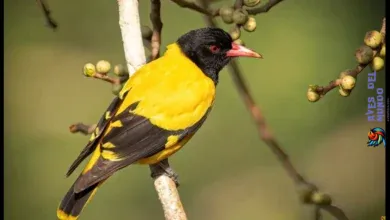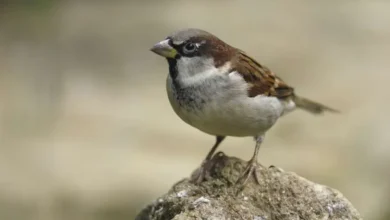Lapwings are very clever – they have great ways of confusing predators. They can also perform aerial acrobatics in which few birds can match them.

Lapwing in numbers
| Body weight | 150–300 g |
| Wingspan | 80–85 cm |
| Body length | 28–30 cm |
| Number (in Poland) | 93–123 thousand individuals |
| Status | numerous |
What bird can the Lapwing be confused with?
The species is difficult to confuse, but if a lapwing sitting on the ground freezes, it can be surprisingly difficult to spot.
How to recognize lapwings?
Lapwings are the size of pigeons, but have much longer, red legs. The top of the body is black with a green sheen, the wings are black with a purple sheen, and the breast, belly and sides of the head are white. Long feathers on the black head form a characteristic tip sticking upwards, slightly longer in the male (8-10 cm) than in the female (5-7 cm). The undertail covers are rusty, the tail is white, rounded, with a black spot at the end.
In males in the mating coat, the front of the head and neck are black, clearly standing out from the white surrounding them. In the resting coat, the contrasts are blurred and black feathers are interspersed with white ones, which is a permanent feature of females. Apart from that, there is no clear sexual dimorphism. (Unlike, for example, Pheasant , where the rooster’s plumage is much more colorful and eye-catching). In the winter plumage of both sexes, reddish feathers appear on the back of the head and around the beak, and those on the back create a distinct scaled pattern.
The chicks covered with down have camouflage colors – they are grey-brown, spotted with black, with a white collar on the back of the neck, edged in black on the top. Young birds are distinguished from adults by a more brown tone, densely scaled feathers on the back, a buff-brown neck and back of the head, and a short crest.
In flight, the silhouette of lapwings is very characteristic – their wings are rounded at the ends and take the shape of the letter M.
Where and when can you see Lapwings ?
Lapwings choose open areas, devoid of shrubs and trees – damp and marshy meadows and pastures in the valleys of large rivers, increasingly moist arable fields with spring grain, drained fish ponds and retention reservoirs, sometimes heaths and fallow lands, and abandoned gravel pits.
Lapwings fly away for the winter. They are among the first to return to us and are considered harbingers of spring. They also leave the lairs at the earliest – sometimes in May, as soon as the young birds start flying. They move from place to place, staying longer where they find good conditions. In summer and autumn, we often meet individuals from the east, while birds that breed in Poland migrate towards wintering grounds in western and southern Europe.
Get to know Lapwing better


Lapwings can be active and feed around the clock, and males even fly at night. These are birds that feel best in smaller or larger flocks. They are very mobile, so they avoid tall grass, as it interferes with running on the ground. When they see a predator from a distance on the breeding ground, they pretend to panic and make a lot of noise or simulate air attacks and thus lure it away from the nest or the young. However, when a predator approaches the nest, they remain calm, remain still, or pretend to be injured and try to lead it into the field.
During the mating season, the male performs spectacular flights – it beats its wings violently, rises and falls, rolls and makes loops. It emits a piercing cry, and the wings themselves can make a lot of noise. The dances end on the ground, where partners run, sway, bow to each other and spread their tails.




Where do lapwings build their nest?
The male digs several shallow holes in the ground, and the female chooses the one that suits her best for the nest. A nest located in a dry place usually contains only a few blades of grass, while in humid places the birds build high mounds of dry grass, on top of which they create a breeding basin.
Lapwings produce one brood per year, but may repeat previously lost broods. The female lays 4 eggs (less often 2 or 3), well camouflaged, olive with darker brown spots. Incubation lasts 26–28 days. Lapwings belong to the so-called true precocials – a few hours after hatching, the young leave the nest under the supervision of very caring parents. They become volatile after 35–40 days. They mature in the first year of life. Males can be monogamous or polygamous and have up to 4 partners.
Lapwings feed on insects and other small invertebrates such as spiders, worms and molluscs. Exceptionally, their diet includes small fish and frogs, sometimes seeds and grass blades. They look for food among low vegetation or in sheltered areas, collecting it or digging it out of the ground, mud or shallow water.



